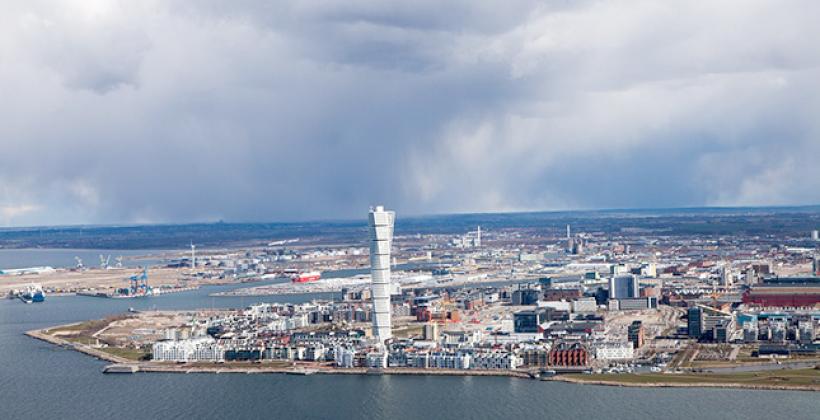
Location
Description
The Lindängen neighborhood is located in the southern part of Malmö and has a population of approximately 6 000 inhabitants. The average income in the neighborhood is lower compared to the average income in Malmö, and the average unemployment rate is higher.
About 1 000 residents live in the four buildings that are included in the Lindängen demo site. The buildings were constructed during the 1970s, and prior to the renovations performed within ZenN the buildings had an outdated heating system, exhaust ventilation without heat recovery, and old windows that needed replacement.
The real estate owner saw potential in attracting new inhabitants to the neighbourhood and to lower the relocation rate by transforming the buildings into buildings with a high environmental profile. Such a transformation was also considered important to carry out because of its potential to change both the inhabitants’ and the non-residents’ view of the neighbourhood. It was also considered reasonable to assume that the energy efficiency renovations should provide a general uplift to the neighbourhood as a whole.
The renovation – scope, content and objective:
In order to considerably improve the energy efficiency and transform the buildings into buildings with a high environmental profile, a number of different measures were planned and are now being implemented within ZenN. The plan addresses both social and environmental issues, and includes installation of individual hot water metering, a new heating and ventilation system with energy recovery, new thermostats, new windows, energy efficient lighting, new efficient engines in the elevators with regenerative modules, solar cells on the roof, and new efficient pumps for the heating system and hot water circulation system.
When all measures have finally been completed there will be performed an energy monitoring during a whole year in order to be able to fully evaluate the effect of the whole renovation. Calculations indicate that the total renovation will lead to a lowering of the final energy consumption of about 53 % (from 161 kWh/(m2 year) before renovation to 76,2 kWh/(m2 year) after renovation).
Development
In autumn 2015, a lot of the renovation measures have been fully completed. Replacement of windows to new high performance ones, replacement of lighting in communal areas and garage to more energy efficient lighting, equipping ventilation system with energy recovery, installation of new thermostats in apartments, replacement of pumps for the heating system and the hot water circulation system to more energy efficient ones, and replacement of elevator engines to more efficient ones with energy regenerative modules have been 100 % completed.
The installation of solar cells on the roof and individual hot water metering has not yet been initiated. The implementation of both these measures is however expected to start very shortly, and both are expected to be fully completed by the end of the first quarter of 2016.
Building aspects
- Building Energy Services
- heating and DHW
- Building Energy Services
- lighting and appliances
- Installed Renewable Energy Sources
- photovoltaic
- Technology used to supply the buildings
- district heating (DH) network
- Technology used to supply the buildings
- electrical equipment
Thematic Field
- Refurbished Building(s)
